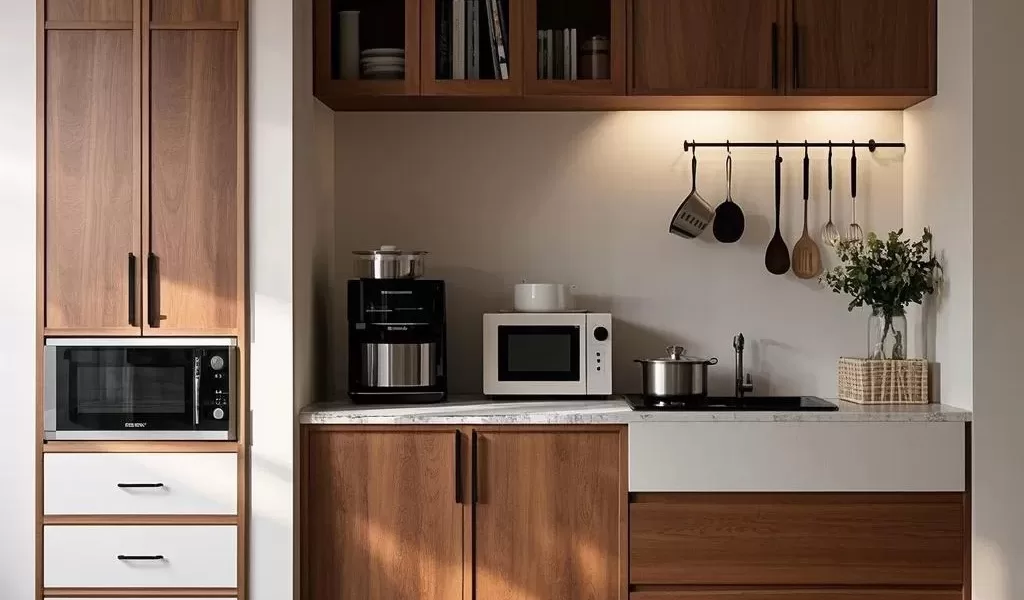Aluminum Alloy Selection in Home Design: A Comprehensive Guide to 6063, 6061, and 7075
In home design, the choice of aluminum alloy hardware directly impacts a product’s aesthetics, durability, and cost. Aluminum alloys, prized for their lightweight nature, corrosion resistance, and ease of processing, have become a mainstream choice for modern home hardware. However, with common grades like 6063, 6061, and 7075 dominating the market, consumers and designers often face “selection paralysis.”
This article dissects the differences between these three aluminum alloys across four key dimensions—strength, machinability, corrosion resistance, and cost—and provides scenario-based recommendations to help you make informed decisions.
Performance Comparison: Core Differences at a Glance
| Property | 6063 | 6061 | 7075 |
|---|---|---|---|
| Strength | Low (light-load suitable) | Medium (balanced) | High (aerospace-grade) |
| Machinability | Excellent (complex extrusion) | Good (general-purpose) | Poor (hard to weld/cut) |
| Corrosion Resistance | Excellent (especially anodized) | Good (environment-resistant) | Fair (requires coatings) |
| Cost | Low | Medium | High |
Scenario-Based Selection Guide
1. 6063 Aluminum Alloy: The Lightweight Aesthetic Champion
Ideal for:
- Window/door frames: Achieves ultra-slim profiles for modern minimalist styles.
- Bathroom fixtures: Resists humidity; anodized finishes offer sleek textures.
- Kitchen pull-outs: Reduces cabinet load; easy-to-clean coated surfaces.
Advantages:
- Superior extrusion capabilities for custom shapes (woodgrain effects, ergonomic handles).
- Cost-effective for budget-conscious, design-focused projects.
2. 6061 Aluminum Alloy: The Balanced Performer
Ideal for:
- Load-bearing brackets: 30% stronger than 6063 for shelves or supports.
- Outdoor furniture: Weather-resistant for long-term sun/rain exposure.
- Drawer slides: High durability for frequent use.
Advantages:
- Strength close to mild steel but 60% lighter.
- Anodized finishes (brushed metal, matte) suit luxury interiors.
3. 7075 Aluminum Alloy: The Extreme-Duty Specialist
Ideal for:
- Home gym equipment: Impact-resistant barbell connectors.
- Heavy-duty ladders: Steel-like strength with easier portability.
- Professional tool parts: High-pressure components (e.g., workbench clamps).
Cautions:
- Poor corrosion resistance: Requires coatings in humid areas (avoid kitchens/bathrooms).
- High processing costs: Specialized tools needed; rarely justified for standard furniture.
Pitfall Avoidance: Common Mistakes & Solutions
Mistake 1: Overprioritizing Strength
- Issue: 7075 is excessive for 95% of home uses; 6061 suffices for most.
- Solution: Match load requirements:
- Light load (≤50kg): 6063
- Medium load (50-200kg): 6061
- Heavy load (≥200kg): 7075
Mistake 2: Ignoring Surface Treatment
- Issue: Untreated 7075 oxidizes unevenly; uncoated 6063 lacks wear resistance.
- Solution:
- 6063/6061: Prioritize anodizing (enhances hardness + fingerprint resistance).
- 7075: Use electroplating/ceramic coatings (e.g., for kitchen tools).
Mistake 3: Environmental Mismatch
- Example: Uncoated 7075 brackets corrode in bathrooms within months.
- Solution: In humid areas, choose 6-series alloys (6063/6061) with routine maintenance.
Conclusion: Smart Material Choices Add “Invisible Value”
Hardware may seem minor, but it’s crucial for user experience.
- For most: 6063—a safe bet for aesthetics and budgets.
- For durability: 6061—balances cost and longevity.
- For experts: 7075—reserved for extreme, specialized needs.
By aligning material properties with real-world demands, you can create homes that are both beautiful and built to last!

